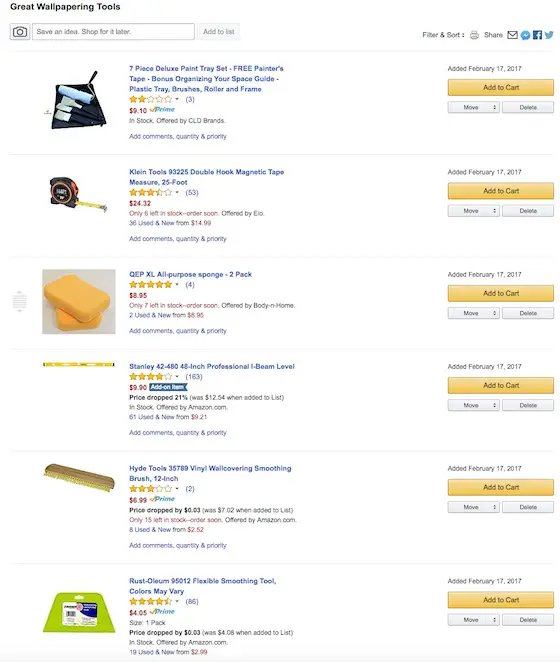Wallpaper
DEAR TIM: Ackkkkk! The wallpaper and/or the adhesive I installed in my new house must be defective. There are several places where the paper has delaminated from the paper backing.
In addition, there are numerous places where the paper pulled completely off the wall exposing the drywall. It also blistered and bubbled during installation. I painted the new drywall before I started. What do you think happened? L. P.
DEAR L. P.: I'll tell you what happened. You very likely made some major mistakes during your installation or you installed the wrong paper in a given location.
Although manufacturing problems do happen, I doubt that your problems can be traced to flaws in either the paper or the adhesive you applied.
Wallpaper hanging is a true craft. Certain wall coverings require specific adhesives. Wall surface preparation prior to the actual hanging of wallpaper is critical.
Successful installations of the many different types of wall coverings require years of experience. Professional wallpaper hangers often have a deep knowledge of paper characteristics, wall preparation techniques, and adhesives.
CLICK HERE to get FREE & FAST BIDS from local wallpaper hangers in case you're getting cold feet.
One of your problems, I believe, is directly related to improper wall surface preparation. In order for wall coverings to stay put for many years everything on the wall must stick to one another.
The drywall paper must stick to the gypsum core, the paint to the drywall paper, the wall covering primer to the paint, the adhesive to the wall covering primer, the paper backing to the adhesive, and so on.
Wall coverings will succumb to the forces of gravity when the weakest adhesion fails. In your case I'll bet that you failed to remove all of the drywall joint compound dust created in the sanding process.
Wallpaper is unforgiving. If you don't get rid of dust, dirt, grease, and stains wallpaper can fall off, show every defect, or cause stains to bleed through the wallpaper.
Very few homeowners know to perform this crucial step. As the adhesive dried behind the paper it created a strong tension force. This literally ripped the paint from the wall. There is a possibility that you will see related failures for up to one year in any room where you failed to remove the dust.
Your paper delamination problems were probably operator error. You may have let the paper relax for too long. When adhesive is applied to wallpaper it causes the paper to swell.
CLICK HERE to get FREE & FAST BIDS from local wallpaper hangers in case you're getting cold feet.
Papers need to expand or relax completely prior to being applied to the wall. This relaxation period changes with different papers. The water in the adhesive soaked deeply into the paper backing (substrate) possibly causing the delamination.
The blisters you experienced are possibly related to this same relaxing requirement. Those sections of paper that bubbled probably didn't relax long enough. The paper continued to swell after it was applied to the wall.
Your paper may also have had an inexpensive pulpy paper backing. These papers perform poorly in areas of high humidity such as bathrooms and kitchen back splashes near cooking or sink areas.
Expanded vinyl papers can also delaminate or pull away from walls in these areas. You must be certain to select wall coverings that are made to perform adequately in high humidity environments.
Just A Few Tools
Let's get started with the tools. Fortunately, you don't need many tools to wallpaper.
Here's a list that will get you going on this job:
- retractable razor knife with snap-off blades
- 4.5 or 6-inch drywall taping knife
- smoothing brush or plastic smoother
- 4-foot level
- grout sponge
- measuring tape
- paint roller & pan
- paint brush
Click the Image Below to get all, or some, of the tools now:
CLICK HERE to get all the tools I recommend in one place. It's easy and fast.
CLICK HERE to get FREE & FAST BIDS from local wallpaper hangers in case you're getting cold feet.
Column 121
